John Birks “Dizzy” Gillespie, the late legendary jazz trumpeter, composer and, with Charlie Parker, pioneer of bebop music, is such a towering figure that when Education Is Not A Crime decided to celebrate the 100th anniversary of his birth, one mural wouldn’t do. It had to be two — a double-mural collaboration and the project’s 20th and largest so far in New York City.
And now Dizzy really does tower over Harlem – in two portraits together standing more than 60-feet tall and 90-feet wide over 135th Street.
Education Is Not A Crime, a street art and human rights campaign founded by the Iranian-Canadian journalist and IranWire editor-in-chief Maziar Bahari, commissioned the murals just days before the September 20th appearance of Iran’s president, Hassan Rouhani, at the annual opening of the United Nations General Assembly in New York.
The artists, Brandan Odums from New Orleans and Marthalicia Matarrita from a few blocks uptown, worked together to create the two portraits. Odums is known in his native New Orleans for a monumental series of socially conscious murals painted on abandoned housing. And Matarrita is a Harlem local whose own struggle to access education made her a natural collaborator for an education equality project.
Dizzy is young in the first portrait, painted after a famous photograph in which he holds his trumpet and gazes down the lens with a look alive with energy. And he is older in the second, blasting his trumpet (now famously bent) with his iconic cheeks. Gathered at the base of the first mural is a thick texture of graffitied words including “unity” and “rise up” and the hashtag #EducationIsNotACrime. Clustered at the bottom of the second mural are a diverse group of children at school.
The mural is part of the campaign’s ongoing effort, which has taken place each September since 2015, to raise awareness of the denial of higher education to Iranian Baha’is. Iran’s government has persecuted the Baha’is, the country’s largest religious minority, since the 1979 Islamic Revolution. One of the most corrosive forms of this persecution is a policy, approved in 1991 by Iran’s Supreme Leader Ayatollah Ali Khamenei, of barring Baha’is from teaching and studying at university.
Dizzy’s story was “perfect” for the campaign, Maziar Bahari said, not simply because of his birthday 100 years ago but also because of his outspoken promotion of Baha’i ideals — like the oneness of humanity. Dizzy joined the religion in 1968 and became one of its most prominent champions.
In his 1979 autobiography Dizzy Gillespie: To Be, or Not ... to Bop, written with Al Fraser, Dizzy said: “When I encountered the Baha’i faith ... I believed in the oneness of mankind. I believed we all come from the same source, that no race of people is inherently superior to any other. And they teach unity, I latched onto that.”
Bahari, who is himself not a Baha’i, explained Dizzy’s relevance to Education Is Not A Crime: “Dizzy was an African-American jazz genius and a humanitarian — he is exactly what our world needs today. His belief in the oneness of humanity, inspired by his faith, shows us the way forward.”
The campaign’s Harlem brand ambassador, Aissatou BeyGrecia, said the artists Odums and Matarrita “changed the street” with the Dizzy murals.
“I remember painting a portrait of Dizzy when I was in high school or college,” Odums said, “and just being fascinated with the whole energy around jazz. And I think it’s fascinating to learn that Dizzy was a Baha’i, and understanding what the overlap was, how his beliefs and what he practiced, and what he preached, tied into the beliefs of the Baha’is. ... I think also that this campaign brings awareness to something that so many people aren’t aware of. That’s what great art does, like Dizzy did with his message. I love to do that with the work that I paint.”
Matarrita, whose Dizzy mural is the second she has created for Education Is Not A Crime in Harlem, explained the campaign’s attempt to draw parallels between the story of the Baha’is in Iran and the experiences of other communities that have or are struggling. “Partnering with Harlem, and particular the history in Harlem, creates a wonderful relationship where [Harlem and the campaign] sympathize with each other. ... The interesting part is finding unison between [the campaign] and who Dizzy was, as an influential man, and a teacher who had other musicians (like Miles Davies) who learned under him.”
The Dizzy mural is the 20th that Education Is Not A Crime has produced in New York – with more than 40 in total across all five continents – and it stands across the street from a plaque bearing Dizzy’s name and likeness on the Harlem Walk of Fame.
Street Art Anarchy, an organization that curates high-impact public art projects, produced the Dizzy mural and the 19 previous Harlem artworks. The Greater Harlem Chamber of Commerce donated the walls, at 229 W 135th Street, for this latest project.
Dizzy was born in 1917 in South Carolina and died in 1993 in New Jersey. His 100th birthday would have been on 21 October of this year.
visit the accountability section
In this section of Iran Wire, you can contact the officials and launch your campaign for various problems






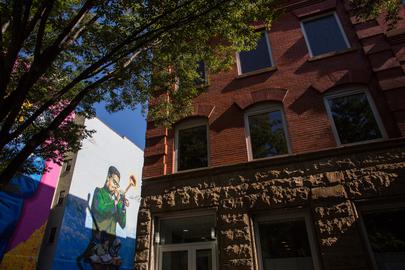
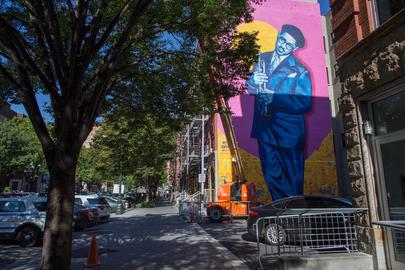
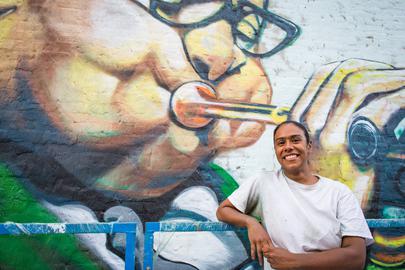
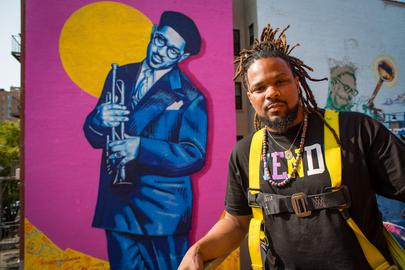
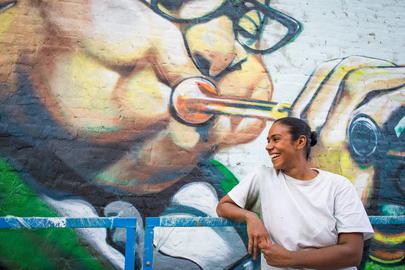
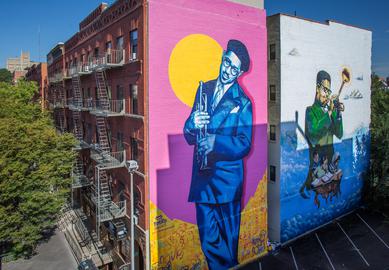




















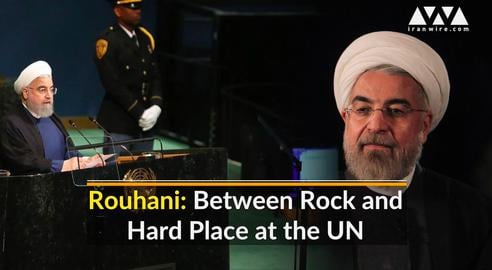
comments